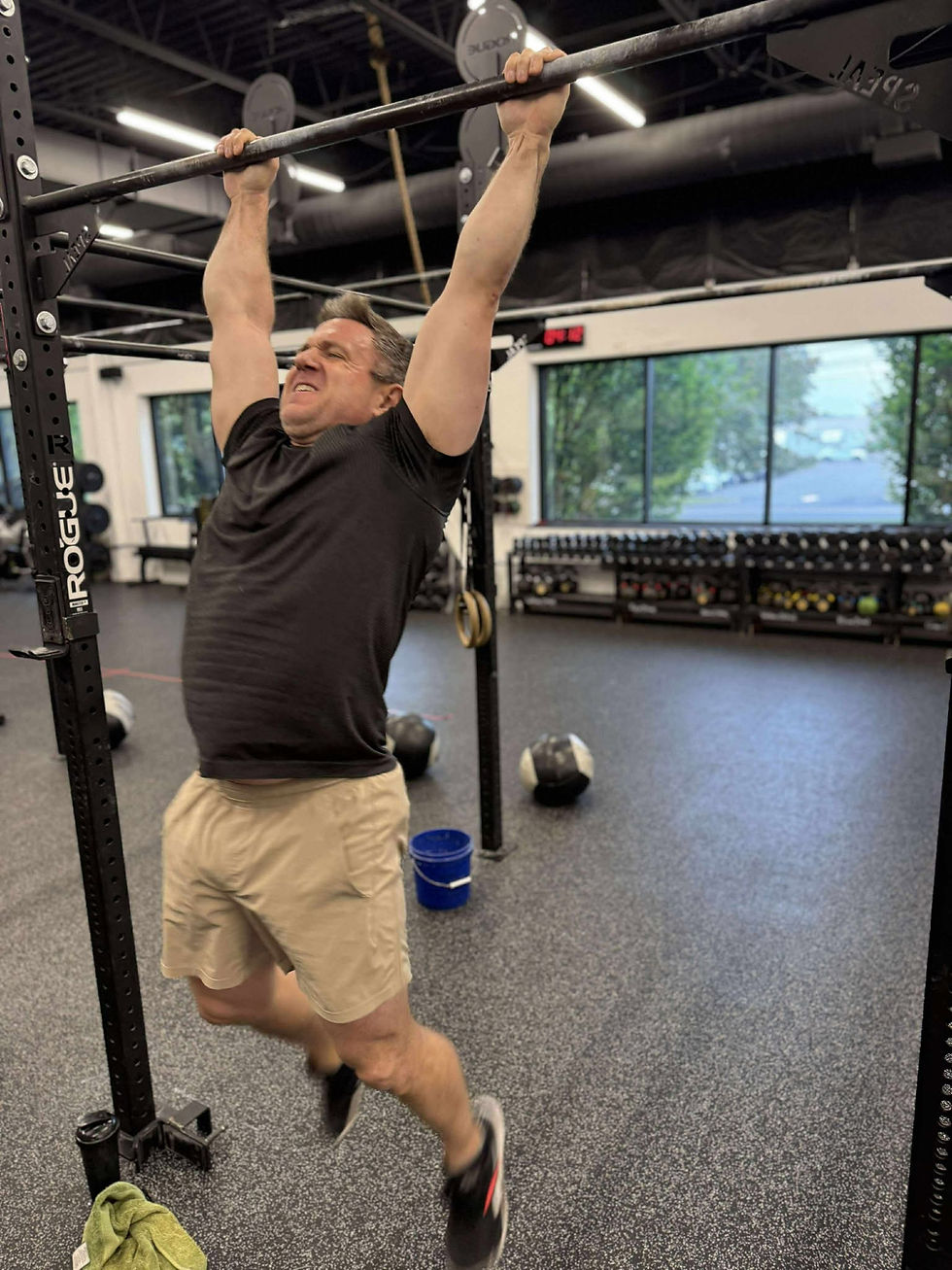Unveiling the Hormonal Symphony Behind High-Intensity Sprints and CrossFit Benefits
- CF201
- Jul 2
- 3 min read
Updated: Jul 11
High-intensity workouts, especially those found in CrossFit, have taken the fitness world by storm over the last decade. Among these exercises, sprinting is a standout as a quintessential form of high-intensity training. But what really happens in our bodies during these explosive moments? This post will explore the hormonal responses triggered by sprinting, connect them to CrossFit, and highlight the numerous benefits of these intense workouts.
The Hormonal Response During Sprinting
When we engage in high-intensity sprints, our body initiates a remarkable hormonal response. The main players in this process are adrenaline (epinephrine), norepinephrine, cortisol, and endorphins.
Adrenaline and norepinephrine are released by the adrenal glands and kick in during fight-or-flight situations. Right when you start sprinting, these hormones spur immediate energy mobilization. They increase your heart rate, boost blood flow to your muscles, and trigger the breakdown of glycogen into glucose. For instance, sprinting at 90% effort can lift your heart rate from about 70 beats per minute to over 180 beats per minute, providing a quick energy supply crucial for short bursts of intense activity.
Cortisol plays a key role too. While often labeled as a stress hormone, it's essential for balancing our energy during prolonged exercise. During intense workouts, cortisol helps mobilize fats and proteins to keep our muscles fueled. This is particularly important as research indicates that cortisol levels can increase by up to 50% during strenuous exercise, ensuring performance is sustained.
Endorphins are another important part of this process. They create a natural pain-relieving effect and can induce the well-known "runner's high." This release not only helps ease discomfort but also lifts our mood, contributing positively to our overall sense of well-being.
In summary, these hormonal responses make high-intensity workouts effective and enjoyable.
The Connection Between Hormones and CrossFit
CrossFit combines diverse high-intensity movements, including sprints, weightlifting, and bodyweight exercises. During these sessions, participants push their limits, mirroring the hormonal responses elicited during sprinting.
For example, a typical CrossFit workout might include a 400-meter sprint followed by a set of heavy deadlifts. This combination drives adrenaline and norepinephrine levels higher, resulting in improved cardiovascular health and metabolism over time. Research shows that participants who engage in high-intensity training regularly may increase their resting metabolic rate by up to 15%.
The variability in CrossFit workouts also enhances both anaerobic and aerobic fitness. This adaptability helps the body face different stressors and cultivates resilience. The hormonal fluctuations tied to these diverse activities support overall fitness and performance goals.
Long-term participation in high-intensity workouts can lead to improved hormone levels related to metabolism, which aids in maintaining lean muscle mass. For instance, studies indicate that regular CrossFit training can enhance insulin sensitivity, reducing the risk of type 2 diabetes by 30%.
Benefits of High-Intensity Workouts
Whether through sprinting or CrossFit, high-intensity workouts bring extensive benefits backed by hormonal responses. Below are some significant advantages arising from these intense sessions:
Enhanced Fat Loss
High-intensity workouts are excellent for promoting fat loss. Elevated adrenaline and norepinephrine during sprints enhance the body's capability to burn fat for energy. Research indicates that high-intensity exercise can elevate calorie burning by 15% to 30% even after the workout is finished, a phenomenon known as excess post-exercise oxygen consumption (EPOC).
Improved Cardiovascular Health
Engaging in high-intensity workouts strengthens the heart and enhances cardiovascular function. The higher heart rates and increased blood circulation lead to a more robust heart muscle. Furthermore, these workouts promote better oxygen utilization, improving stamina in daily activities. A study found that participants who engaged in high-intensity interval training for 12 weeks experienced a 25% increase in cardiovascular endurance.
Boosted Mental Well-being
Endorphins released during high-intensity exercise are linked to improved moods and reduced anxiety. Many CrossFit participants report a significant boost in happiness and motivation post-workout. The communal aspect of CrossFit also builds social connections, which can enhance overall life satisfaction and mental health.
Greater Muscle Strength
High-intensity workouts that include resistance training positively impact muscle strength. Hormones triggered during these workouts, especially growth hormone, play a vital role in muscle protein synthesis and increased lean mass. They also contribute to improved bone density, which is crucial for overall health, especially as we age.
Embracing the Hormonal Boost
The hormonal interactions that occur during high-intensity sprints and CrossFit workouts have far-reaching benefits for both body and mind. As we push ourselves in these exercises, our bodies react with a cascade of hormones that enhance performance, promote health, and uplift our spirits.
Understanding these hormonal responses helps individuals appreciate the advantages of incorporating high-intensity training into their fitness routines. Whether you are a veteran of CrossFit or just starting with high-intensity workouts, engaging with your body's hormonal responses can lead to a healthier, more fulfilling life.




